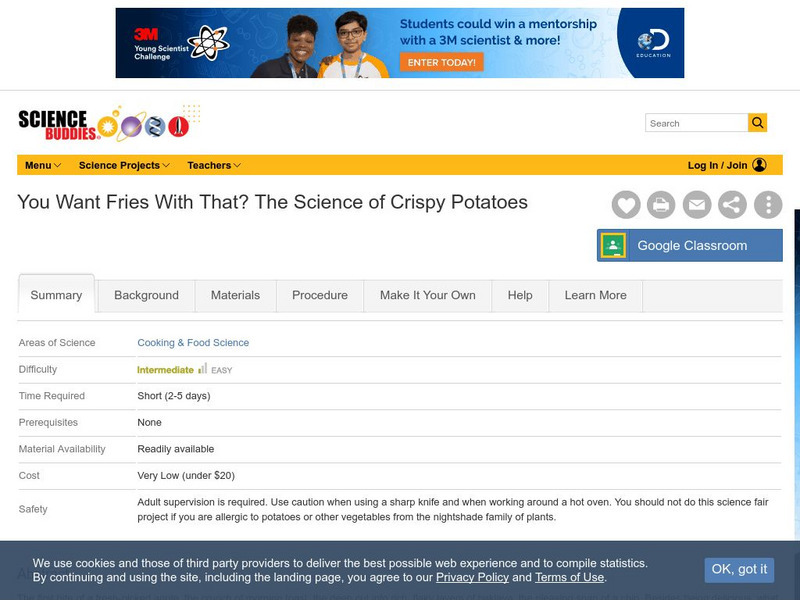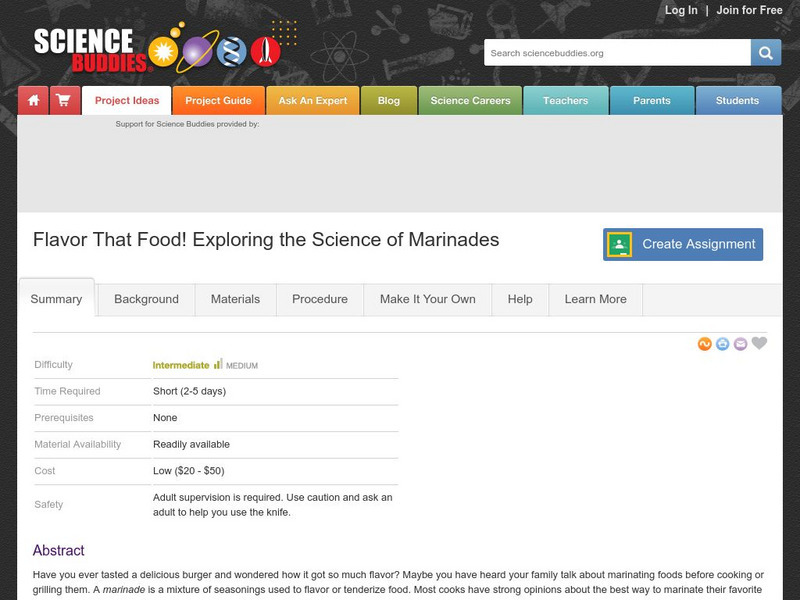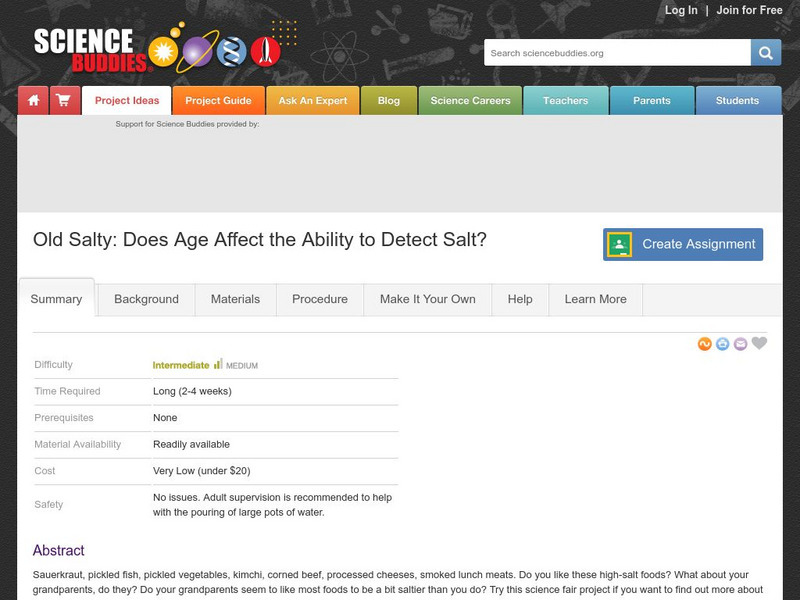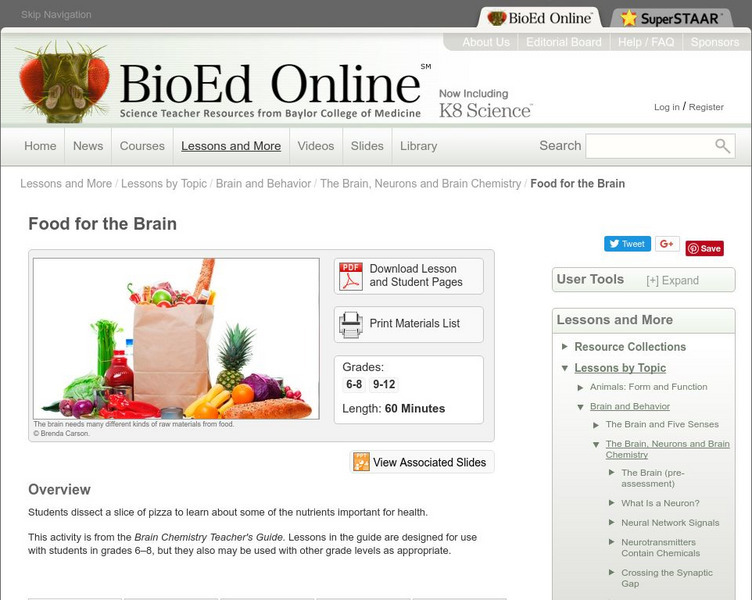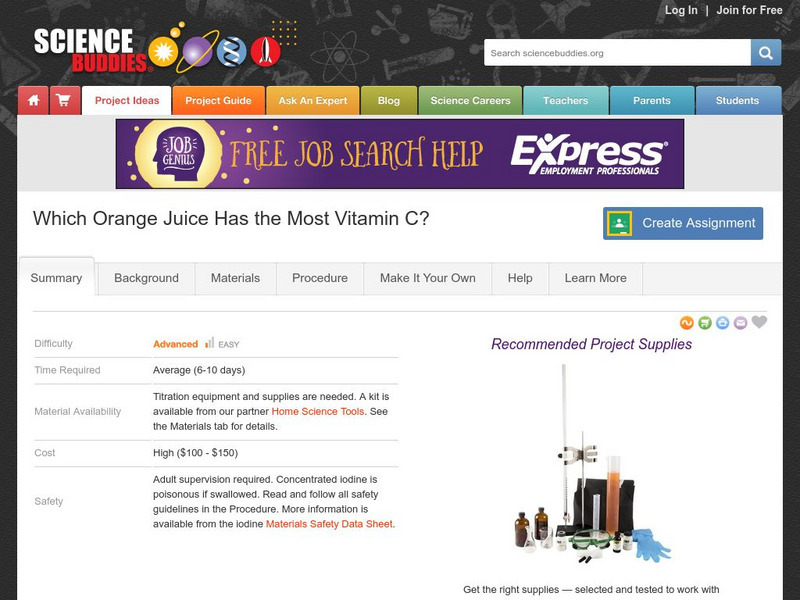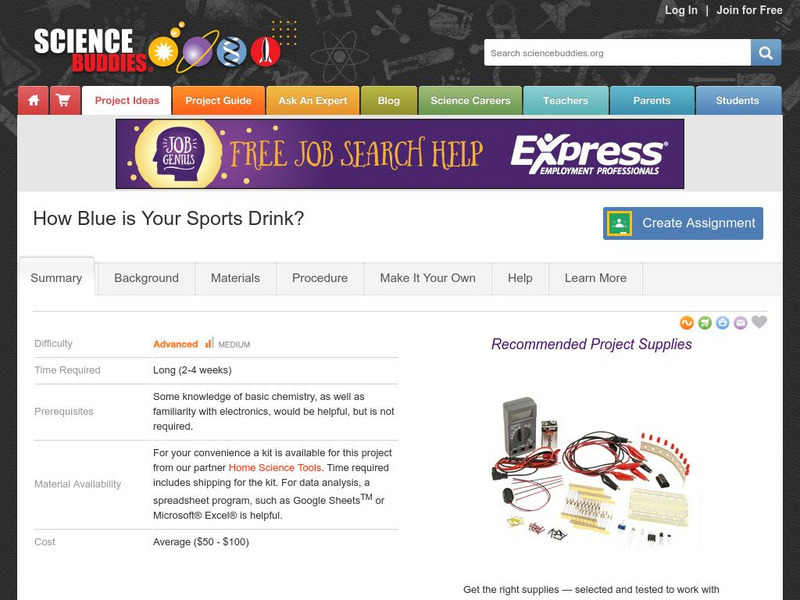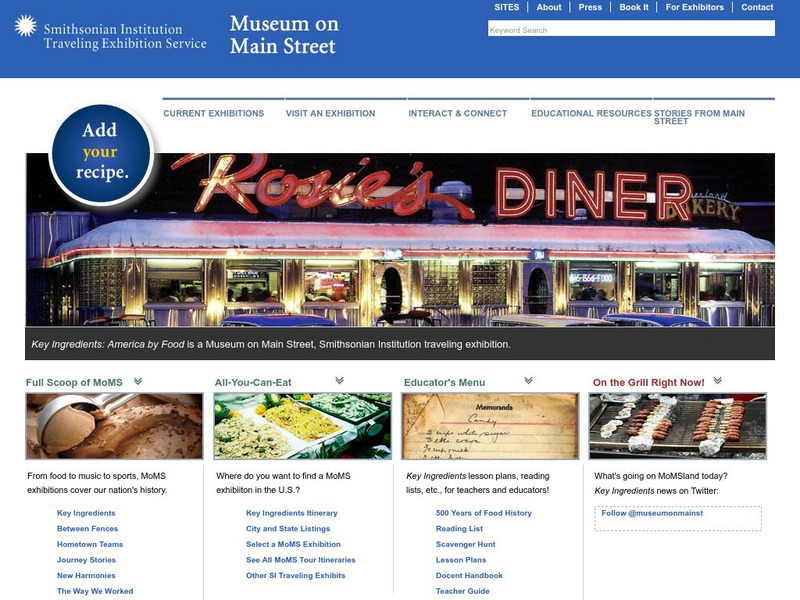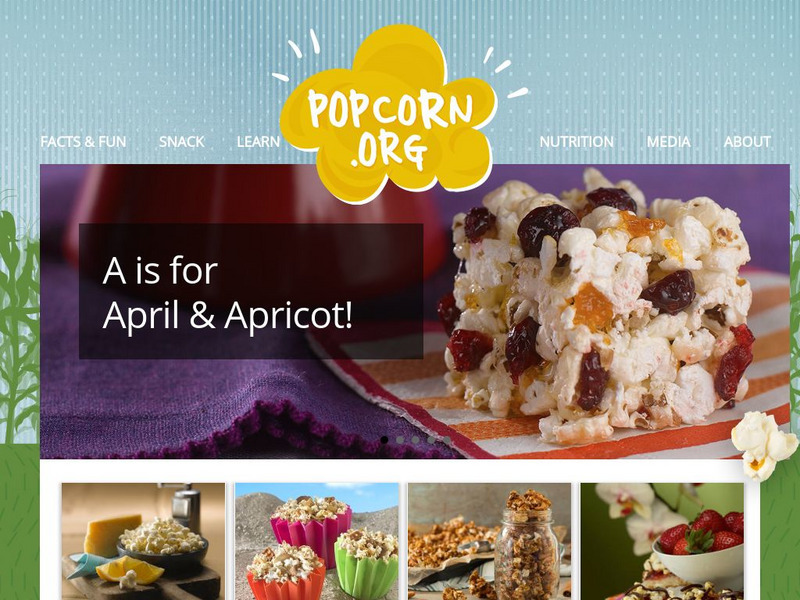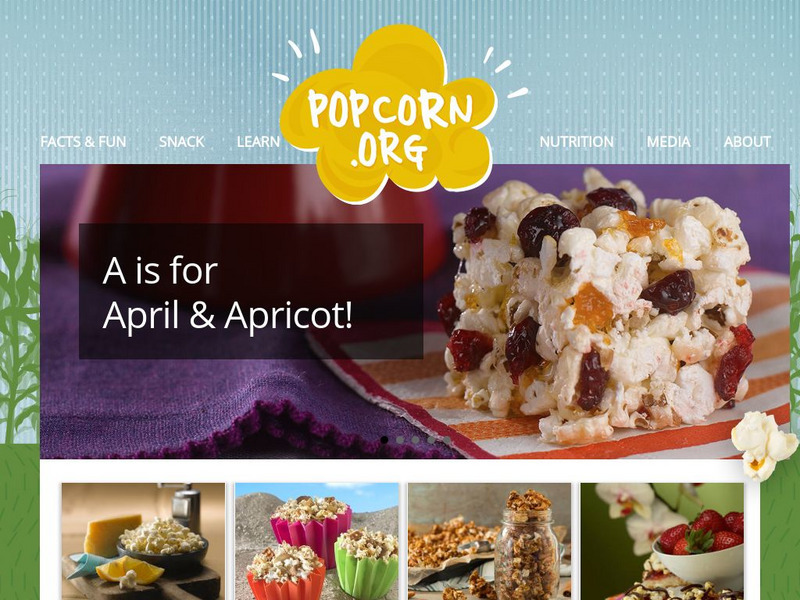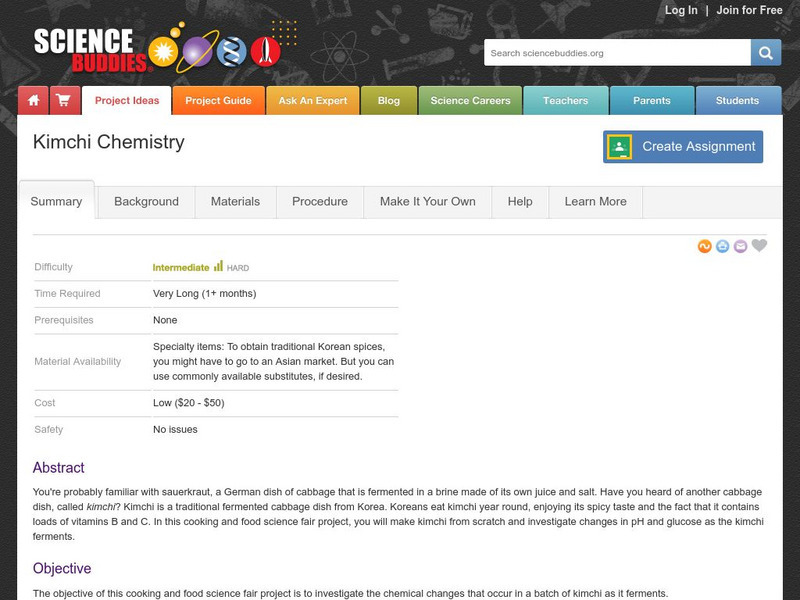Science Buddies
Science Buddies: You Want Fries With That? The Science of Crispy Potatoes
The first bite of a fresh-picked apple, the crunch of morning toast, the deep cut into rich, flaky layers of baklava, the pleasing snap of a chip. Besides being delicious, what do these foods have in common? They're crisp. They have a...
Science Buddies
Science Buddies: Flavor That Food! Exploring the Science of Marinades
Have you ever tasted a delicious burger and wondered how it got so much flavor? Maybe you've heard your family talk about marinating foods before cooking or grilling them. A marinade is a mixture of seasonings used to flavor or tenderize...
Science Buddies
Science Buddies: Maple Syrup: For Pancakes, Waffles, and Crystal Candy?
Maple syrup is deliciously gooey and great on breakfast foods like pancakes and waffles. But it has another amazing property. It can form crystals under the right circumstances, and the crystals change in size and shape, depending on...
Science Buddies
Science Buddies: How Can Tofu Pack Such a Flavorful Punch?
Spicy fried tofu. It's a delicious and savory main dish at many Asian restaurants. Stab a golden-brown piece, bite into it, and the juice inside rushes out, filling your mouth with rich flavors. Continue eating and you find the texture...
Science Buddies
Science Buddies: Egg Cellently Cooked Eggs: The Process of Soft Boiling an Egg
Sometimes on a busy day, it's hard to get things done. The rush to get things done can start first thing in the morning, when you're so busy getting ready and gathering your homework, that you barely have time for breakfast. It takes...
Science Buddies
Science Buddies: Old Salty: Does Age Affect the Ability to Detect Salt?
Sauerkraut, pickled fish, pickled vegetables, kimchi, corned beef, processed cheeses, smoked lunch meats. Do you like these high-salt foods? What about your grandparents, do they? Do your grandparents seem to like most foods to be a bit...
Science Buddies
Science Buddies: How Greasy Are Your Potato Chips?
One of America's favorite snacks is potato chips. Although potato chips are very tasty, some varieties are not very healthy for you. A typical 1-ounce (oz.) serving of a well-known national potato chip brand contains 150 calories, 90 of...
Science Buddies
Science Buddies: How Sweet It Is! Measuring Glucose in Your Food
You know that sugar makes food sweet. But did you know that there are different kinds of sugar? Sucrose is the granulated sugar that you usually use for baking. Another kind of sugar, which is found in honey and in many fruits, is...
BioEd Online
Bio Ed Online: Raw vs. Processed Food
In this lesson students will gain an understanding of what "processed" means. They will also distinguish between natural and processed foods, and learn about sources of some foods.
BioEd Online
Bio Ed Online: Food for the Brain
The brain needs many different kinds of raw materials from food and ecommended serving sizes are often smaller than the size actually served or the amounts people eat. For this lesson students are introduced to this concept by dissecting...
Science Buddies
Science Buddies: Which Orange Juice Has the Most Vitamin C?
In this project you'll learn how to measure the amount of vitamin C in a solution using an iodine titration method. You will hypothesize which juice will contain the most vitamin C, and then compare the amount of vitamin C in three...
Science Buddies
Science Buddies: How Blue Is Your Sports Drink?
Do you read the list of ingredients in foods and drinks before you buy them at the grocery store? If you do, you may have noticed that many of the items that are blue in color have the same dye, called FD&C blue 1. In this chemistry...
Other
Key Ingredients: American by Food
Online companion site to a Smithsonian exhibit exploring the key ingredients of American cuisine. Learn about the common foods that Americans buy, prepare, produce, preserve, and serve at their tables. You'll discover different regional...
American Chemical Society
American Chemical Society: Development of Baking Powder
The invention of baking powder had a huge impact on bakers' ability to produce and distribute bread to large numbers of people. The history of this lowly ingredient is presented, along with a chemistry lesson plan for secondary students.
TeachEngineering
Teach Engineering: Cereal Magnets
In this activity, students will design a process that removes the most iron from the cereal. This activity is meant for the students to experiment with different materials using what they know about iron, magnets, and forces to design...
TeachEngineering
Teach Engineering: A Tasty Experiment
Students conduct an experiment to determine whether or not the sense of smell is important to being able to recognize foods by taste. They do this by attempting to identify several different foods that have similar textures. For some of...
Other
Popcorn!
This site shows you that there is so much to learn from popcorn! Here you can learn about popcorn's nutritional value, play games, or even try science and art experiments involving popcorn. Full of fun activities and teacher resources too!
Other
Popcorn!
This site shows you that there is so much to learn from popcorn! Here you can learn about popcorn's nutritional value, play games, or even try science and art experiments involving popcorn. Full of fun activities and teacher resources too!
Science Buddies
Science Buddies: Project Ideas: Kimchi Chemistry
In this cooking and food science fair project, the student will make a batch of kimchi, the national dish of Korea, and investigate the changes in pH and glucose concentration as it ferments. The Science Buddies project ideas are set up...
Other
British Nutrition Foundation: Food a Fact of Life (11 14 Years)
A rich collection of eleven learning modules that cover a wide range of topics, including nutrition, diet and health, food science, agriculture, food preparation, food processing, food safety, and more. Modules have PowerPoints,...
Other
Usda: Virtual Labs: Gram Staining
In this science simulation, students learn how use gram staining to test for bacterial contamination in yogurt.
Other
Usda: Virtual Labs: How to Use Oil Immersion Microscope
In this science simulation, students learn how to use a microscope as they investigate bacterial contamination in a sample of yogurt.
Other
Usda: Virtual Labs: Testing and Adjusting P H
In this virtual science lab, students learn how to control the pH level in salsa to prevent the growth of a dangerous bacterium.
Other
Usda: Virtual Labs: Understanding Water Activity
In this science simulation, students investigate the behavior of water in food and how this can contribute to food spoilage.


